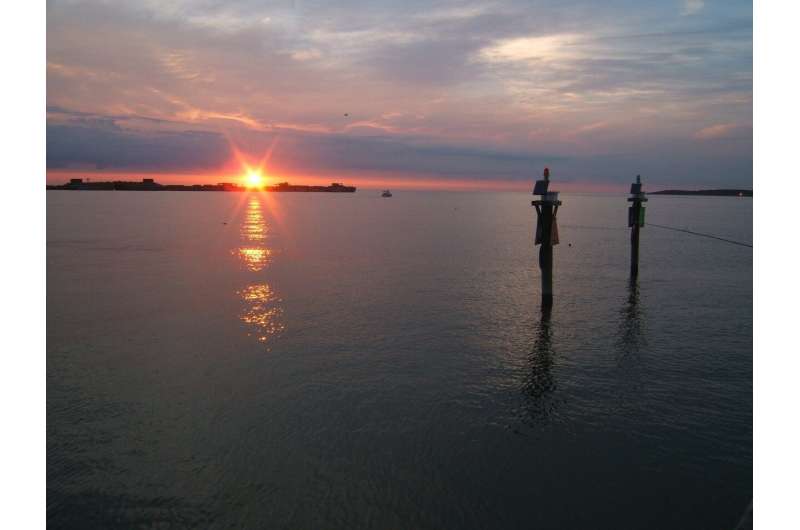This article has been reviewed according to Science X's editorial process and policies. Editors have highlighted the following attributes while ensuring the content's credibility:
fact-checked
reputable news agency
proofread
Some Chesapeake Bay goals won't be reached by 2025, EPA evaluation finds

The EPA has released its latest evaluation of the Chesapeake Bay, and Virginia is only hitting some of its goals to meet by 2025.
The evaluation reported that Virginia is 80% to its goal of reducing nitrogen and 62% of its goal for phosphorus. Currently, the state has already met its goal for reducing sediment by 2025. States across the Chesapeake Bay region have a collective goal of reducing pollution in the bay significantly by 2025 using a "pollution diet," or the total maximum daily load.
Too much nitrogen, phosphorus and sediment in the Chesapeake Bay contributes to poor water quality. Nitrogen and phosphorus fuel the growth of algae blooms, and sediment can block sunlight from reaching underwater grasses, which in turn suffocates shellfish.
"Virginia continues to make incremental progress toward its goals, but the current pace of implementation is not on track to meet its statewide nutrient targets," the evaluation states. "EPA expects Virginia to continue to accelerate (best management practices) implementation in the agricultural sector."
Chris Moore, Virginia Executive Director for the Chesapeake Bay Foundation, said in a statement that Virginia still has a lot to do when it comes to restoring health in the Chesapeake Bay, and increased development and climate change play a part in that.
The foundation laid out a path forward in order to meet goals. In December, the Chesapeake Executive Council—a panel made up of governors of states along the bay, the mayor of DC, the EPA administrator and the chair of the Chesapeake Bay Commission—will meet to discuss current goals for a clean bay.
The Chesapeake Bay Foundation is now encouraging the council to readdress the Chesapeake Bay Agreement and rethink restoration "measures in years, not decades," said Hilary Harp Falk, president and CEO of the foundation.
In 1983, the governors of Maryland, Pennsylvania and Virginia, the mayor of Washington and the U.S. Environmental Protection Agency administrator signed the first joint commitment to addressing the historical decline of the bay's health. Over the years, that mission has evolved and expanded.
"While tremendous progress has been made, these evaluation reports demonstrate we still have a long way to go," Falk said. "As climate change, development and population growth make finishing the job harder, we must be direct about the challenges ahead."
2024 The Virginian-Pilot. Distributed by Tribune Content Agency, LLC.

















